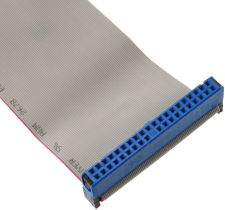Ultra DMA
Stands for "Ultra Direct Memory Access."
Ultra DMA, also abbreviated UDMA, is an interface that transfers data between a computer and a storage device (usually a hard drive). It is the fastest version of DMA, replacing Word DMA (or WDMA) and supporting a burst transfer speed of up to 133 MB/s. Like all other versions of DMA, it allows the transfer of data directly from the system memory, bypassing the CPU and removing the associated overhead.
Computers use the various DMA modes to transfer data from a memory to a hard drive over the Parallel ATA interface. The faster speeds offered by most UDMA modes require a hard drive to be connected by an 80-conductor ATA cable instead of a 40-conductor one. The extra lines in this cable are all ground lines, separating the data lines to prevent interference.
UDMA adds two new features over WDMA to allow faster data transfer rates. First, double transition clocking transfers data twice per clock cycle instead of just once. Second, cyclic redundancy checking (CRC) uses an algorithm to calculate redundant information in a data transfer and includes a CRC code with the data. The receiving device checks the CRC code against the data received to see if any data was corrupted during the transfer, and requests the data be sent again if necessary. If CRC errors occur frequently, the system may switch to a slower UDMA mode to increase reliability.
 Test Your Knowledge
Test Your Knowledge